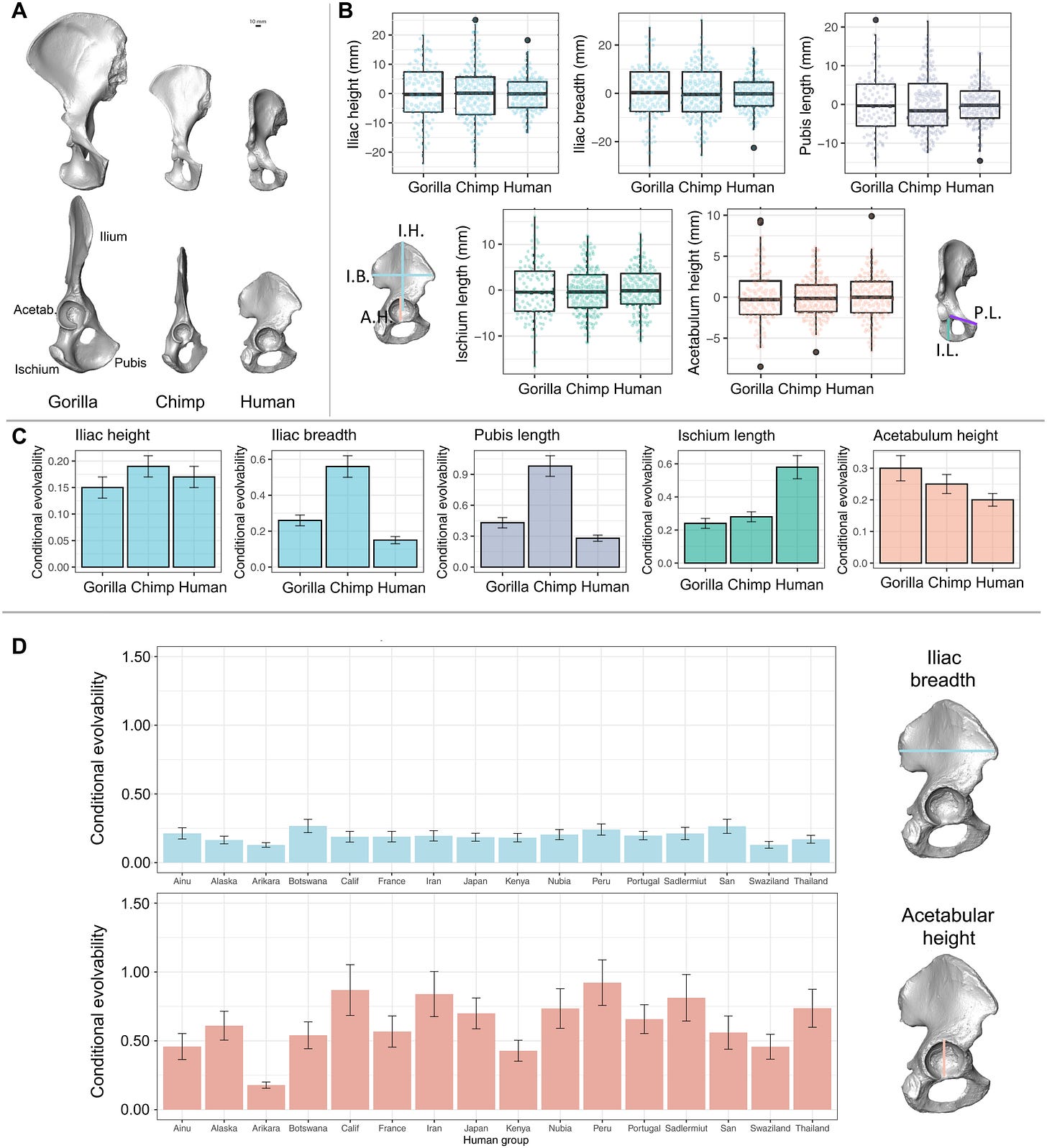The Genetic Evolution of the Human Pelvis
Genes demonstrate how our pelvis evolved for upright walking.
The large, basin-shaped human pelvis is one of our species' distinctive physical traits. We wouldn't be able to stand up straight or have kids with big brains without it.
A new paper in Science1 identified the developmental stage at which the pelvis begins to resemble a human. The paper identified the stage in human embryonic development, and the hundreds of genes and regulatory RNA sections responsible for this transition and the authors come to the conclusion that many show evidence of significant bipedal natural selection. The results support the idea that genetic changes that have an effect on early embryonic development typically cause evolution to produce novel physical features.
The pubis and ischium, which shape the birth canal, and the iliac, which resemble blades and fan out to form the hips, are the three primary parts of the pelvic girdle. The birth canal of great apes are rather narrow, and their iliac are comparatively lengthy and flat against their backs.

Humans, on the other hand, have rounded, shorter ilia that flare out and curl in all directions. Thanks to the altered iliac, which also act as attachment points for the muscles that stabilize upright walking, our large-headed newborns may fit through a larger birth canal. In the 4.4 million years old Ardipithecus ramidus, a hominid with somewhat turned-out iliac and possibly occasional two-footed movement, these pelvic characteristics were already taking shape.
However, it was unknown when and how certain traits emerged during the human gestation period. Many essential features of the human pelvis, such its curved, basin-like shape, are already created by week 29. The authors wondered if they would manifest earlier, when the pelvis' cartilage structure was still in place and the pelvis hadn't yet converted to bone.

